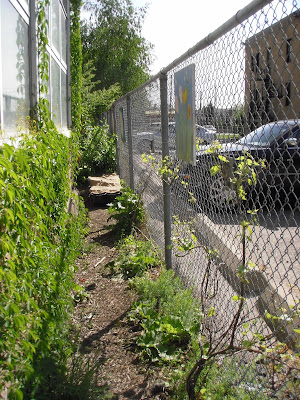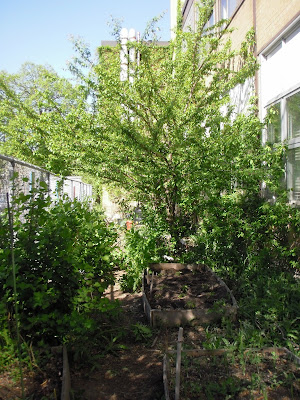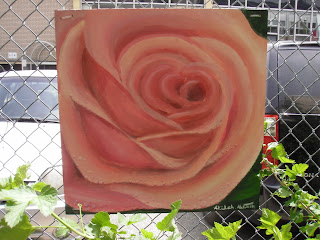 Last month I was invited by one of my OISE colleagues, Airin, to join her at George Harvey Collegiate Institute and help out with the school's food initiatives.
Last month I was invited by one of my OISE colleagues, Airin, to join her at George Harvey Collegiate Institute and help out with the school's food initiatives. As part of the service-learning component for the Philosophy of Food: Food Justice and Education Thought course at OISE, University of Toronto, led by Dr. Bradley Rowe, I was awarded the opportunity to experience first hand the remarkable learning that occurs in the school garden. Garden-Based learning has been an area of interest, and I was looking forward to see the positive effects of school gardens that has been largely documented.
 |
| front garden |
 |
| Jump Start Breakfast Program |
 |
| side garden |
 |
| side garden, before the garden beds were prepared for planting |
 |
| green house |
Over the years, students have built raised beds, toiled the soil and planted trees and shrubs. Furthermore, a greenhouse which sits at the back garden, was donated by the community, allowing the school to grow organic food all year long.
 |
| seedlings, grown by the food and nutrition class |
 |
| seedlings, grown by the food and nutrition class |
After our tour, we were joined by the Grade 10 food and nutrition class to plant seedlings which the students had grown from seeds. The Grade 10's were eager to plant their seedlings. Before they got started, they first needed to prepare the garden beds, removing all of the weeds that had grown during the off-season, and toil the soil to ensure a healthy garden.
The students each took on varying jobs, some worked in the garden beds and removed weeds, while others prepared stakes and twine. Laughter and lively conversation dominated, as students worked steadfastly to prepare their gardens.
For many, this was their first time to work in the school garden, and for even more it was their first time to be gardening and working with soil at all. This new opportunity was welcomed by all the students. As students were working hard to prepare the gardens it was hardly quiet. Student's were laughing and chatting with each other. Many students who usually would not spend time to talk to one another, found common interest in the gardens. The gardening activity brought together the students in ways that could not be achieved in the classroom.
 |
| potato seedlings |
In the afternoon, we joined Airin's grade 12 philosophy class in the garden and planted seedlings donated by The Stop Community Food Centre.
variety of vegetable, herbs, and flower seedlings. The students worked in the garden and planted the donated seedlings while engaging both the mind and body.
 |
| student artwork |
The garden activities bring to light what Ralph Emerson's vision of a holistic education which educates the mind, body and the heart. For Emerson, nature becomes a site of education where each the mind, body and the heart are engaged and work together.
The student artwork which lined the fenced garden, demonstrates the expression and creativity of the students which transcends beyond the classroom. The garden is truly a site that is cross-curricular, and allows students of all ages to participate in inquiry and discovery.
 |
| garden beds |
I shared with the students the excitement of transforming a space into an area of growth and life. The space which the gardens now occupy were at one point unused and wasted. Transforming the space into gardens has fostered community building and an area for which the students can connect with both the environment and a local source of food. The students were engaged in environmental education which gave them the knowledge, skills, perspectives and the practice that they need to be active and responsible citizens.





.JPG)






